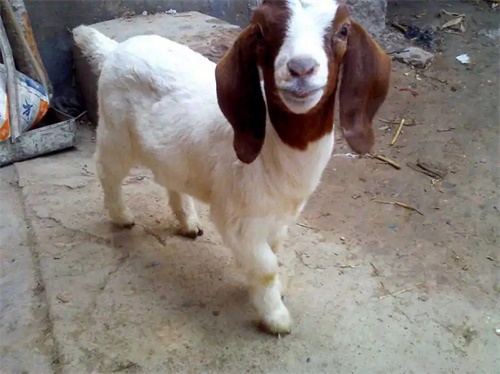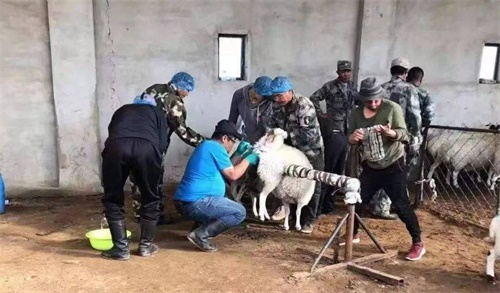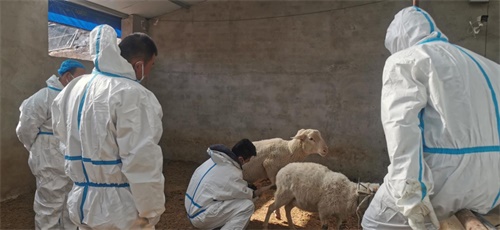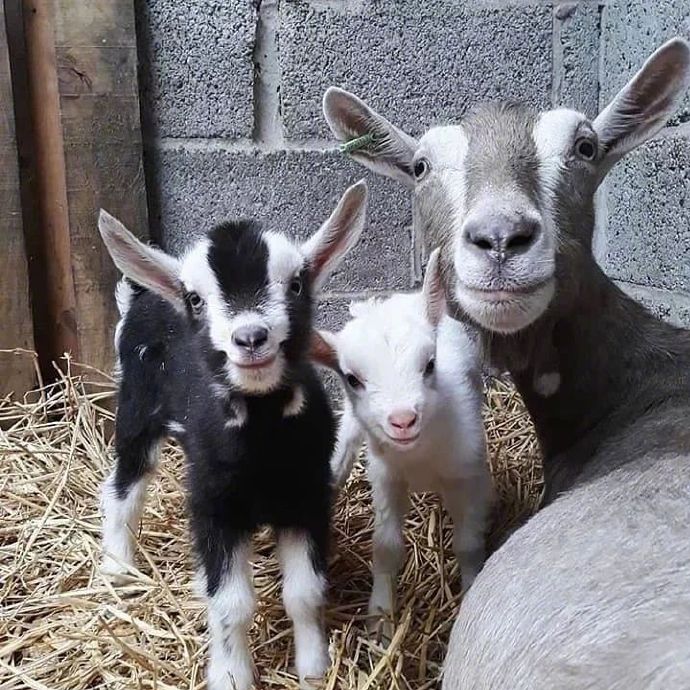Reproductive efficiency is critical in modern goat farming, where herd improvement, economic returns, and productivity are closely linked to how well breeding is managed. In recent years, goat reproduction has become increasingly challenging, largely due to inaccuracies in insemination timing and technique. As a result, ultrasonography has gained widespread attention in goat breeding programs. By integrating ultrasound guidance with artificial insemination (AI), farmers can overcome anatomical barriers in does and optimize pregnancy rates. This article explains how we apply ultrasound in artificial insemination in goats, combining insights from global research and field practices to present a clear picture of this evolving technology.

Reproductive Challenges in Goats and the Role of Ultrasound
Unlike cattle, goats are vaginal ejaculators and possess a unique cervical anatomy. The cervix of the doe is narrow and firm, featuring multiple transverse annular folds that form tight spiral rings. These structures are not easily penetrable and open only slightly during estrus. Consequently, traditional AI techniques that involve deep cervical or intrauterine insemination—such as those performed in cattle using rectal palpation—are often ineffective or inapplicable in goats.
This anatomical constraint results in lower conception rates when insemination is not guided. In response, ultrasonography, particularly transabdominal or transrectal B-mode imaging, has become a valuable tool. By providing real-time images of the reproductive tract, ultrasound allows practitioners to identify ovulation timing more precisely and guide the insemination catheter to the optimal location without invasive surgery.

Synchronization and Timed Artificial Insemination
Timed artificial insemination (TAI), combined with estrus synchronization protocols, has transformed the way AI is practiced in goats. This approach eliminates the need for visual estrus detection, which is often unreliable in does due to their subtle estrus signs. Using exogenous hormones such as GnRH and prostaglandins, synchronization protocols induce ovulation within a predictable time frame.
In practice, AI is performed approximately 16 hours after the second GnRH injection, regardless of whether estrus signs are observed. Ultrasound plays a key role here by confirming follicular development and ovulation status. For instance, studies and on-farm trials have shown that most synchronized goats ovulate between 12 and 24 hours after the final hormone treatment in late autumn and early winter. This window allows AI to be precisely timed to coincide with ovulation, thereby increasing the likelihood of fertilization.
Ultrasound imaging also simplifies estrus detection and reduces errors from missed or mistimed insemination. This reduces the labor associated with frequent heat checks and improves the efficiency of large-scale breeding programs.
Comparing Laparoscopic and Ultrasound-Guided Insemination
Laparoscopic intrauterine insemination (LAI) is often hailed as the gold standard in goat AI due to its high conception rates. This method bypasses the cervix entirely, delivering semen directly into the uterus via a minimally invasive surgical procedure. However, LAI requires specialized equipment, surgical facilities, and skilled personnel, making it less practical for routine field use.
Ultrasound-guided AI offers a non-surgical alternative that can approach the effectiveness of LAI when properly applied. Using ultrasound, veterinarians can visualize the reproductive tract, assess cervical openness, and navigate the insemination catheter to the appropriate depth. While this technique still requires technical skill, it is less invasive and more adaptable to different farm settings. Moreover, it can be repeated with minimal stress to the animal.
In both methods, the critical factor remains timing. Even with LAI or ultrasound guidance, insemination performed outside the ovulation window will yield poor results. Therefore, synchronization and ultrasound monitoring must go hand in hand.

Field Application: From Lab to Farm
Incorporating ultrasound into routine breeding operations involves more than just equipment—it requires a shift in management mindset. Farmers must invest in training or collaborate with veterinarians experienced in reproductive ultrasound. Fortunately, portable and affordable ultrasound machines are now widely available, making this transition feasible even for small-scale producers.
In our own breeding program, we combine estrus synchronization, TAI, and ultrasound diagnostics in the following workflow:
Hormonal Treatment: Administer progesterone-releasing devices and follow with prostaglandins and GnRH injections according to the synchronization protocol.
Ultrasound Monitoring: Check follicular development using ultrasound 24–36 hours after prostaglandin injection.
Timed Insemination: Perform AI 16–20 hours after the second GnRH injection, guided by ultrasound if needed.
Pregnancy Confirmation: Conduct a follow-up ultrasound at 25–30 days post-insemination to confirm pregnancy and detect embryonic viability.
This integrated approach has improved our pregnancy rates significantly while reducing wasted labor and semen. It has also made it easier to plan breeding schedules and coordinate herd management.
Global Research and Perspectives
International research confirms the effectiveness of ultrasound-assisted AI in goats. For example, studies from Europe and Australia have demonstrated that using B-mode ultrasound to monitor ovarian activity improves insemination success. Research conducted in the U.S. also supports the combined use of TAI and ultrasound, noting that proper timing and accurate follicle detection are more critical than the insemination technique itself.
In many countries, goat meat and milk are in high demand, pushing farmers toward more intensive and efficient reproduction systems. Artificial insemination, assisted by reproductive technologies like ultrasound, plays a vital role in this modernization. It supports genetic improvement, disease control (by limiting animal movement), and herd uniformity. These benefits are particularly significant in crossbreeding programs aimed at enhancing meat quality, fertility, or milk production.

Benefits of Ultrasound in Goat AI
The following are the most impactful benefits of using ultrasound during artificial insemination in goats:
Improved Timing: Accurately predict and confirm ovulation, ensuring AI is performed within the optimal window.
Higher Pregnancy Rates: Increase conception success by targeting insemination to coincide with reproductive readiness.
Non-invasive Monitoring: Reduce stress and health risks associated with surgical techniques like LAI.
Efficient Resource Use: Save labor and semen by avoiding unnecessary or mistimed insemination.
Better Herd Management: Synchronize kidding, improve offspring uniformity, and streamline production planning.
The Future of Goat Reproduction with Ultrasound
The traditional breeding system based on visual estrus detection and manual insemination is no longer sufficient to meet the demands of large-scale goat farming. As goat meat and dairy industries expand, precision tools like ultrasound become indispensable.
Moving forward, integrating AI, estrus synchronization, and ultrasonography will be key to sustainable reproduction. Further innovation—such as automated follicle detection software, AI-assisted image analysis, and improved synchronization protocols—will enhance efficiency and reduce the need for specialized skills.
For goat producers worldwide, embracing ultrasound technology represents a step toward higher productivity, better genetics, and more consistent herd performance.
tags:


